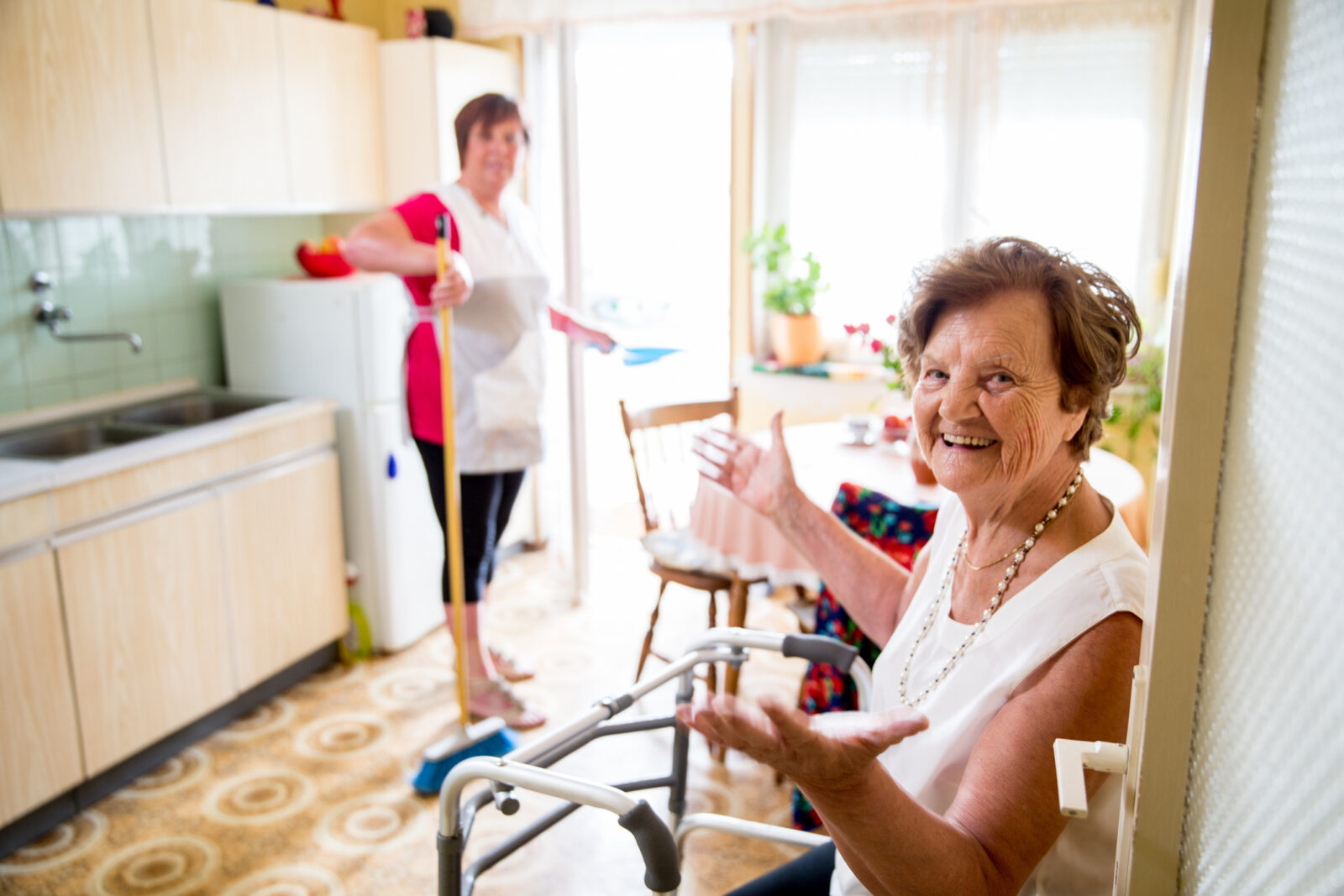Clutter Free is Carefree

As the birds chirp and the flowers bloom, there’s a rejuvenating spirit in the air, signaling the arrival of spring. It’s a time of renewal, growth, and for many, a time to organize living spaces. For older adults, maintaining a clutter-free environment is not just about tidiness; it’s about promoting safety and well-being.
Why be clutter free?
Wherever you live, a clean space is both aesthetically pleasing and essential for physical safety and mental health. Here’s why:
- Reduced risk of falls. Every second of every day, a person 65 or older in the U.S. suffers a fall; falls are the leading cause of injury and injury death for older adults. Cluttered spaces increase the risk of trips and falls, which can be particularly hazardous for older adults. By keeping pathways clear and eliminating unnecessary items, seniors can move around their homes with greater ease and confidence.
- Improved mental well-being. A clutter-free environment promotes mental clarity and reduces stress. In one survey, individuals who described their homes positively had lower levels of cortisol (the stress hormone) than those describing them as cluttered or unfinished. For seniors, especially those dealing with cognitive decline or sensory overload, simplifying their surroundings can enhance mental function and overall peace of mind.
- Enhanced accessibility. Clutter can be distracting and may prevent focus. Professional organizer and writer Peter Walsh noted, “Clutter isn’t just the stuff on the floor. It’s anything that gets between you and the life you want to be living.” Clearing out clutter makes it easier for seniors to access essential items, reducing frustration and promoting independence in daily activities.
How to get clutter free?
There are endless books, articles, and videos on how to approach organization. But here are some tips tailored to help older adults declutter:
- Start small. Tackling an entire home can be overwhelming. Instead, begin with one room or even one area within a room. Start with the areas that are most frequently used, such as the living room or bedroom, and gradually work your way through the rest of the house. Set manageable goals to prevent fatigue and maintain motivation.
- Prioritize safety. Focus on clearing pathways, removing tripping hazards, and ensuring that emergency exits are unobstructed. Consider installing grab bars in bathrooms and handrails on staircases for added safety. Remember the adage “A place for everything and everything in its place.” Use storage to keep belongings off the floor and create a sense of openness.
- Use tools. Adaptive tools such as reachers or grabbers can help pick up things and are especially handy for those with mobility or dexterity challenges. Paper clutter can quickly accumulate and overwhelm living spaces; if comfortable with technology, consider transitioning to digital storage for important documents or change to “paperless” billing.
- Seek support. Take advantage of community resources, such as shredding days and donation drives; these sometimes provide help or services free of charge. Don’t hesitate to enlist the help of family members, friends, or professional organizers if needed. Collaborative efforts not only make the task more manageable but also foster a sense of community and connection.
Decluttering and organizing can be achieved in bits and pieces, over time. It can also be an opportunity to reminisce and remember. A clutter-free home isn’t just carefree—it’s a sanctuary to thrive and flourish, enjoying the beauty of spring even in the autumn of life.
![Charlesgate [logo]](https://www.charlesgate.net/wp-content/uploads/sites/218/2016/12/logo-new.png)